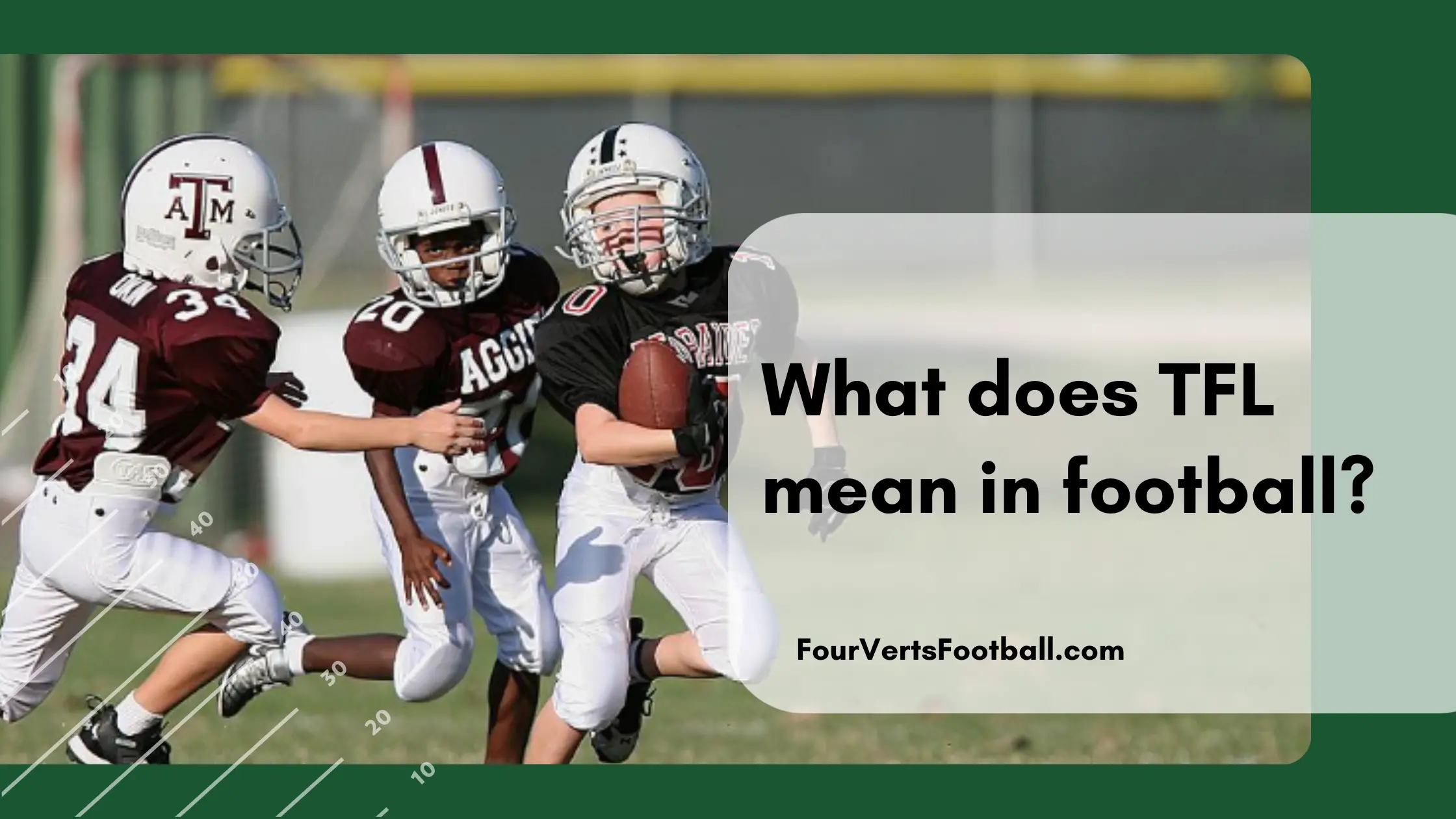The acronym TFL stands for tackle for loss. A Tackle for loss occurs when the ball carrier is tackled behind the line of scrimmage.
This means the offense will have lost yardage on the play. Tackles for loss are quite hard to come by. Most offensive plays are going to gain yards or result in no change.
This makes getting a TFL a valuable play for the defense. For the most part, TFLs will be earned by the defensive line due to their close proximity to the line of scrimmage.
Other similar football statistics include ff (forced fumble) as well as Comb (combined tackles).
When Do TFLs happen?
Now that you know TFL stands for a tackle for loss you may be wondering what these plays look like on the field.
Below we will break down some of the common situations that lead to a TFL in football.
Quarterback sack
One of the most common reasons for a TFL in football is a quarterback sack. A sack occurs when a quarterback is tackled before he is able to throw the football.
Forward passes can only be completed when the player is behind the line of scrimmage. For this reason, whenever a quarterback is tackled when attempting to throw it will almost always be behind the line of scrimmage.
Oftentimes sacks on the quarterback are the best TFL as they tend to result in the largest loss of yards.
In these plays, a defensive lineman is often able to get past his blocker on the offensive line and get to the quarterback.
Defenses may also utilize blitzes in order to get a tfl sack on the quarterback. This involves the defense sending more players than usual after the quarterback often overwhelming the offensive line.
It is worth mentioning if a quarterback is sacked right on the line of scrimmage this will not count as a tackle for loss as no yards were lost.
Disrupted run
Another play that can result in a TFL in football is a disrupted run. On rushing plays the defensive line is going to try their best to bring down the running back before he gets out of the backfield.
Every once and a while one of the defensive linemen is going to beat their blocker and get to the running back.
Additionally, defensive tackles play the role of stuffing holes in the offensive line. If the running back is going to run between the tackle and guard the defensive tackle is going to try and occupy this space.
This can leave ball carriers stuck in the backfield with nowhere to go. Oftentimes the other defensive players will converge on this player in the backfield leading to a TFL.
Failed screen pass
Another common way in which a TFL can occur in football is during a screen pass.
On a screen pass a team is going to quickly pass the ball right at the line of scrimmage.
Several players will then run in front of the player who caught the ball as blockers.
If these players block their opponents it can often result in a big play. The trouble is these blocks are not always successful.
On a wide receiver screen, the cornerback right in front of the wide receiver will need to be blocked. If he slips through the receiver will be tackled immediately and usually for a loss.
On running back screens defensive lineman are often able to identify the screen and tackle the player behind the line of scrimmage right after he catches the ball.
That’s all for our guide to the TFL acronym to learn more see our articles on what YPG stands for in football statistics or what LNG means .

